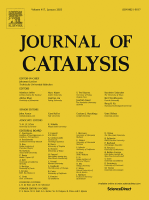Transmission electron microscopy showed that xerogel of long and short fibrous boehmite samples, AlO(OH), were respectively produced via hydrolysis of aluminium alkoxide at slow and high stirring rates. Thermogravimetry, differential scanning calorimetry, and X-ray diffractometry, showed the two xerogels to produce similar calcination products, at 400±C and up to 1000±C, for the chemical and phase composition of the material bulk. In contrast, nitrogen adsorption measurement revealed different surface textural consequences of the boehmite fiber length. It has been concluded that the short fiber boehmite produces on calcination aluminas that are more resistant to particle sintering (thermally stabilized) than the long fiber boehmite.


